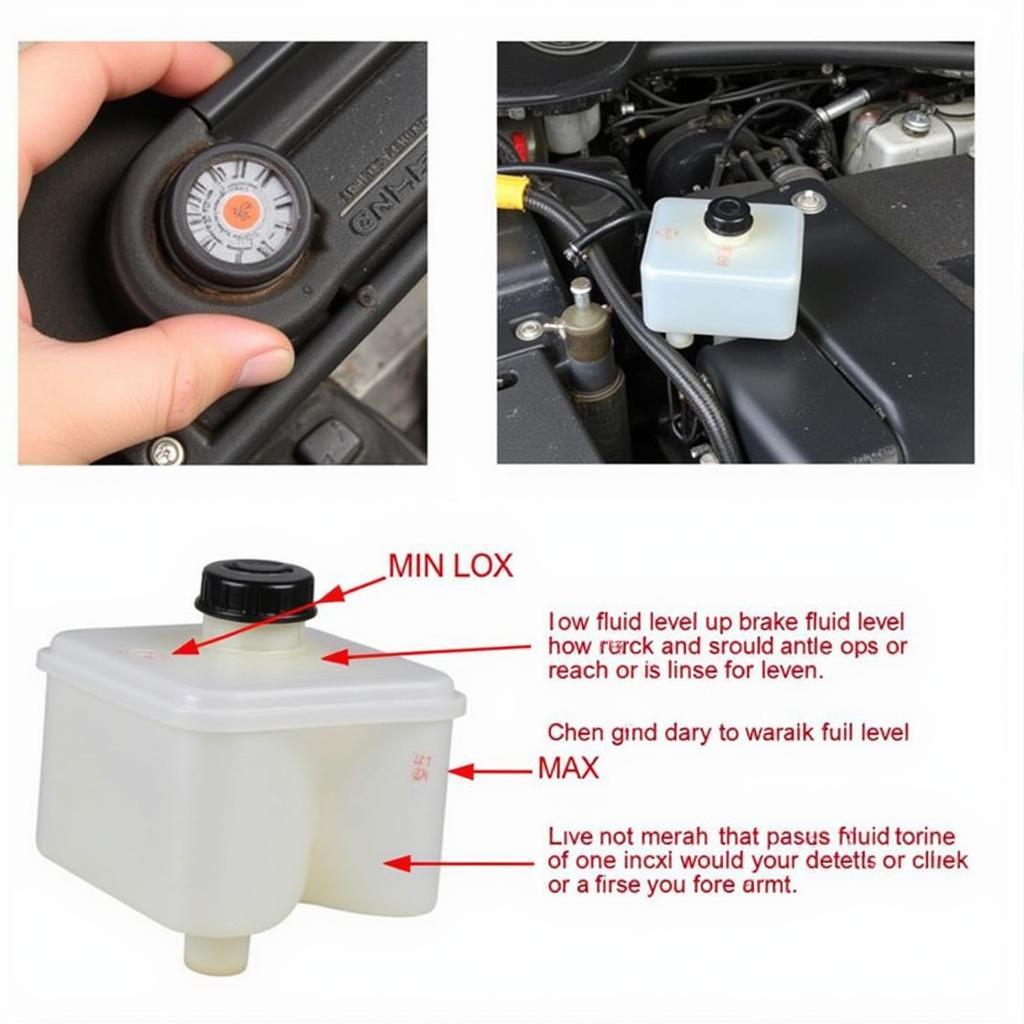If your 1994 Honda Accord LX brake warning light is stubbornly illuminated, the culprit could be a faulty brake warning lamp sensor. This guide will walk you through understanding, diagnosing, and replacing the sensor, potentially saving you a trip to the mechanic. We’ll cover everything from understanding the sensor’s function to buying a replacement and installing it yourself.
Understanding the Brake Warning Lamp Sensor
The brake warning lamp sensor, sometimes called the pressure differential switch, plays a vital role in your 1994 Honda Accord LX’s braking system. Its primary function is to alert you to potential issues within the hydraulic system. When the pressure difference between the two circuits of your braking system exceeds a certain threshold, the sensor triggers the warning light on your dashboard. This often indicates a leak or imbalance in the system, requiring immediate attention. Ignoring this warning can lead to serious safety risks.
Why is my 1994 Honda Accord LX Brake Warning Light On?
A lit brake warning light doesn’t always mean a faulty sensor. Low brake fluid, worn brake pads, or even a slightly engaged parking brake can also trigger the light. Before focusing on the sensor, check these more common causes. If these aren’t the issue, a malfunctioning sensor may be buy a 1994 honda accord lx brake warning lamp sensor to fix the issue.
How the Sensor Works
The sensor works by monitoring the pressure in the two independent hydraulic circuits of your braking system. If one circuit develops a leak, the pressure difference between the two circuits activates the sensor, illuminating the warning light. This simple yet effective mechanism provides an early warning of potential brake failure, allowing you to address the problem before it becomes critical.
Diagnosing a Faulty Brake Warning Lamp Sensor
Before buying a 1994 honda accord lx brake warning lamp sensor, you should confirm it’s the actual problem. Visually inspecting the sensor for damage or leaks is a good starting point. A multimeter can also be used to test the sensor’s electrical continuity. If the sensor fails the continuity test, it’s likely the cause of the illuminated warning light.
Testing with a Multimeter
To test the sensor, disconnect the electrical connector and use a multimeter set to the ohms setting to check for continuity across the sensor’s terminals. A reading of zero or near zero indicates a good sensor, while a reading of infinity suggests a faulty sensor needing replacement.
Other Diagnostic Tips
If you’re uncertain about testing the sensor yourself, consult a qualified mechanic. They can diagnose the issue accurately and recommend the appropriate course of action.
Replacing the Brake Warning Lamp Sensor
Replacing the sensor is a relatively straightforward process that can be done with basic tools. First, locate the sensor, typically mounted near the master cylinder. Disconnect the electrical connector and carefully remove the sensor using the appropriate wrench. Install the new sensor, ensuring a tight fit, and reconnect the electrical connector. Finally, bleed the brakes to remove any air that may have entered the system.
Where to Buy a 1994 Honda Accord LX Brake Warning Lamp Sensor
You can buy a 1994 honda accord lx brake warning lamp sensor from various sources, including auto parts stores, online retailers, and even Honda dealerships. Ensure you purchase the correct part for your specific model to avoid compatibility issues.
Step-by-Step Replacement Guide
- Locate the brake warning lamp sensor.
- Disconnect the electrical connector.
- Remove the old sensor using the correct wrench.
- Install the new sensor and tighten securely.
- Reconnect the electrical connector.
- Bleed the brakes.
Conclusion
Addressing a faulty brake warning lamp sensor in your 1994 Honda Accord LX is crucial for maintaining a safe and reliable braking system. By understanding the sensor’s function, diagnosing the issue, and following the replacement steps outlined above, you can tackle this repair yourself and ensure your vehicle’s continued safe operation. Remember, if you’re unsure about any step, consult a qualified mechanic. A functioning brake system is paramount to your safety on the road, so don’t delay in addressing this important component – buy a 1994 honda accord lx brake warning lamp sensor if needed.

